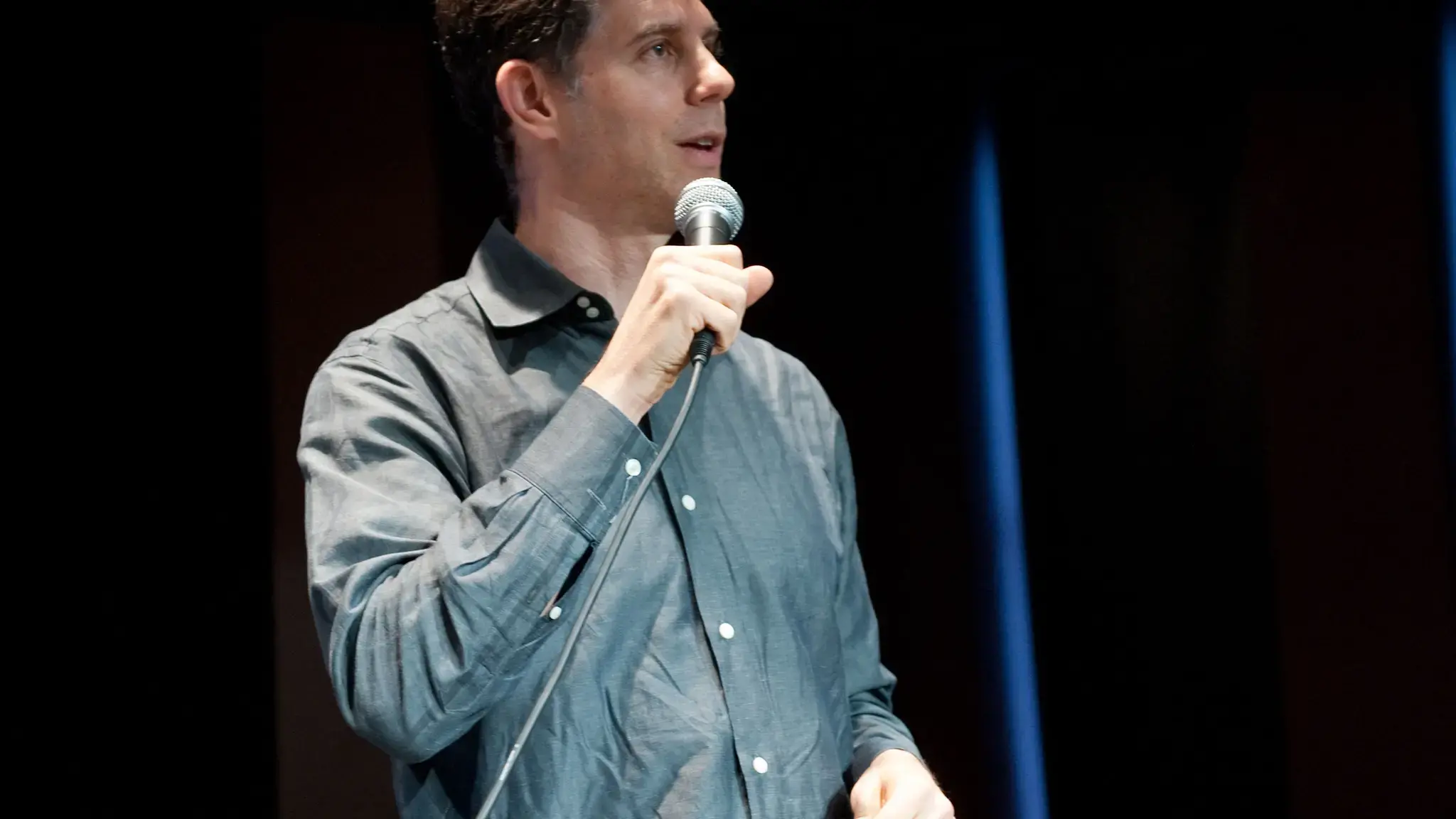

This is the second entry in Act I of Push Me, Pull You, the Center’s series on (co-)authorship. For a full list of posts in this series, visit the main Push Me, Pull You page.
Sojourn Theatre founding artistic director Michael Rohd is committed to civic dialogue. The core artists of Sojourn’s Oregon-based ensemble jointly create community-specific plays in locations across the country. Their works have explored issues including the urban/rural conversation, the human propensity for war, and business ethics versus personal responsibility. Sojourn’s documentary play Witness Our Schools toured statewide and influenced the Oregon legislature’s discussion of funding for public education.
Sojourn’s plays engage audiences not only in the performances but sometimes in the creation of scripts. Their recent Finding Penelope riffed on the life of Odysseus’ wife, who wove and unwove a tapestry each night of her husband’s 20-year absence. This new piece, which examines dementia using Penelope’s life as a framework, was created in a long-term care facility with the participation of patients and staff.
The theater company’s goals include “bring[ing] strangers together amidst experiences where the ethical possibilities of imagination are placed alongside the communal muscle of responsibility.” In Michael Rohd’s reflections below, he makes clear that some of his greatest artistic satisfactions result from an intentional “collision of brains.”
In my mind, co-authorship works if it follows one hard and fast rule: The maker engaged in co-making must be as interested in the contribution of the “other” as they are in their own voice.
So what does it mean, for something to “work” in the context of co-authorship? It means that however messy and challenging, the process of making rests on a foundation of respect. It also means that somewhere at the nexus of product, intention, and excellence, what gets made satisfies a collectively agreed upon definition of success.
As for the “other”—the contributor who isn’t “you”—they may be a peer artist, a group of young people, or a specific community constituency. They are whomever you have invited, or accepted an invitation from, to create something. They are your collaborators.
I’d define collaboration as the practice by which individuals work together towards a shared goal. To determine the viability of a collaboration, I often ask myself a question: Do I truly believe that this other person, or persons, will have as good an idea as I might? (What constitutes a “good” idea changes with the project’s intention. There is no universal good. I am responsible for articulating a project-based good to myself before I ask the question in relation to someone else.) The question is not, “Will they have an idea I agree with?” The questions are, “Will I listen with faith and enthusiasm, or will I listen with judgment? Do I fear their idea won’t live up to my standards?” I can’t create if listening to a collaborator makes me anxious and closes me down. I’ll be too busy protecting the work.
Co-creating takes an intentional generosity in the ways we deal with relationships, with process, and with ourselves. It can be as easy as a great first date or as difficult as a tense family meal at holiday time. It can be one of those one day, and the other the next.
So why do it? Because though there is power in the expression of singular voices and visions, I find the world far too complex to wrestle with and articulate the matters I want to explore without the collision of other brains, hearts, and experiences. Investigations I undertake alone yield discoveries far less satisfying than what my explorations with others reveal.
My belief in the value of those explorations is the bridge between excellence and participation. Co-authorship for the sake of inclusion—without a true passion for collision—can lead our conversations as makers into a misdirected debate about “professional” and “amateur.” Those who have spent a lifetime learning an artistic discipline bring a virtuosity unmatched by those whose energy has been spent elsewhere. But that virtuosity is not the only value that makes an art experience potent for the engaged audience/witness/participant. A belief in the unqualified superiority of skill-based virtuosity with no room (or curiosity) for an expansive investigation into diverse values is bound by a narrowness of vision that risks more than irrelevance or elitism: It risks, in the long run, work that is uninteresting.
Whether co-authorship means deep engaged research, collaborative creation, or participation within a tightly constructed aesthetic framework, this is not an either/or conversation. There is a spectrum of intentions and contexts that can help us clarify what we choose to value and how we can articulate those values as the core of a process where we learn from each other as makers and citizens.
For me, co-authorship is the propulsion of curiosity and the desire for collision. If you take it on, it’s a choice that needs to be made, within any single process, again and again and again.